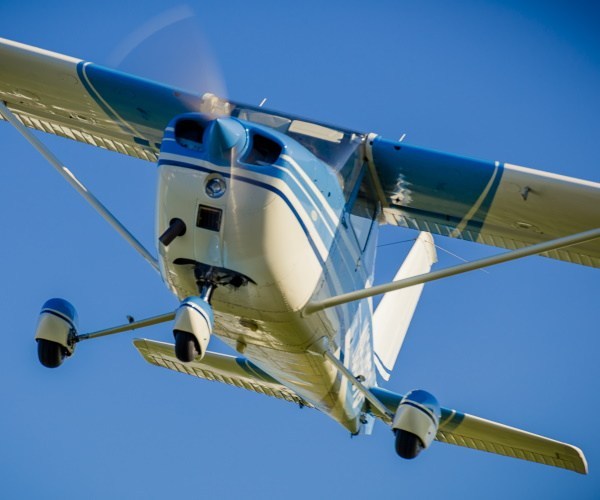For an aircraft to be able to fly – both safely and legally – it ultimately needs to be airworthy. The FAA defines an aircraft as being airworthy if it “conforms to its type design and is in a condition for safe operation.” In order to be categorized as airworthy, an aircraft needs to comply with any Airworthiness Directives (ADs) that have been issued and that apply to its operation.
If you’re an experienced pilot or owner/operator, you’re no doubt experienced and knowledgeable on the importance of ADs. But for the more novice aviation professional or private pilot, ADs can provide more of a challenge in that they contain a lot of information and can be difficult to interpret. But doing so is an essential aspect of safe and successful aviation.
Here is a breakdown of what an Airworthiness Directive is and why they’re so important to keeping your aircraft in the air.
What is an Airworthiness Directive?
Airworthiness Directives are legally enforceable rules issued by the FAA in order to correct an unsafe condition in a product, such as an aircraft engine, propeller, or the aircraft itself. ADs are essentially notifications to owners and operators that a safety deficiency exists in the aircraft and must be corrected.
ADs usually come about as a result of an aircraft or component being found to have issues, which can be brought to light by service difficulty reporting by operators or by the results of an aircraft accident investigation.
If an aircraft has outstanding ADs that have not been complied with, the aircraft is not considered airworthy. And that is a significant concern.
Why are Airworthiness Directives important?
The main reason ADs are important is because if your aircraft is not considered airworthy, it is not legally allowed to fly.
ADs are mandatory in most jurisdictions and often contain dates or flying hours by which compliance must be completed. Doing so is the sole responsibility of the owner/operator, and if compliance is not achieved, any subsequent flight or operation is likely to result in FAA fines or penalties.
But there’s more to AD compliance than legal considerations. ADs are designed to ensure safe flight for all aircraft. Apart from legal concerns, flying while not in compliance with an AD can cause structural damage or failure to aircraft parts and can even lead to a fatal accident.
Different types of Airworthiness Directives
There are many different types of ADs an owner or operator may come to experience over time. Airworthiness Directives can be:
- Urgent and requiring of immediate compliance prior to further flight
- Less urgent and requiring of compliance within a specific period of time
- Requiring of a one-time inspection or modification
- Requiring of periodic inspections or part replacements
- Applicable to all aircraft within a specific brand or model
- Applicable to all aircraft within a certain serial number range
- Applicable only to certain parts, such as propellors, landing gear, and exhaust systems
An example of an Airworthiness Directive
An example of an AD that specifically applies to aircraft exhaust systems is AD 2000-01-16, which covers all twin Cessna piston airplanes and is quite well-known by owners, operators, and FBOs that work on these aircraft.
Like many ADs, this one is fairly lengthy and in-depth, so we’ve broken out the highlights here. AD 2000-01-16:
- Applies to all twin Cessna piston aircraft serial numbers
- Requires visual inspection of the entire system every 50 service hours or 30 days (whichever occurs first)
- Requires removal of the tailpipe and inspection for cracks, distortion, corrosion, etc. every 12 months
- Requires pressure testing of the entire system every 12 months
- Requires replacement of V-band clamps every 500 service hours
- Requires the exhaust system be removed every 2,500 service hours or 12 years (whichever occurs first) and sent to an FAA-approved repair facility for overhaul
Get in the air and stay there with Nicrocraft
If your aircraft exhaust system is not in compliance with all applicable ADs, this must be corrected immediately if you hope to return to the skies. And Nicrocraft is here to help.
Nicrocraft provides flight schools, FBOs, distributors, and aircraft owners with aircraft exhaust parts that are higher-quality and more durable than the competition – and we’ve been doing so for more than 50 years. All of our aircraft exhaust parts are built to the latest OEM specifications at our state-of-the-art facility in Oklahoma City.
We are a leading FAA-certified supplier of exhaust parts for Piper, Cessna, Cirrus, Beechcraft, and more. We prioritize efficient communication and rapid turnaround to get you the parts you need, when you need them. We’re aviation people whose ultimate goal is to help you get in the air and stay there.
Contact us or request a quote today for the best way off the ground with the only aircraft exhaust parts built to take the heat.
Disclaimer: The content of this post is intended to provide educational background only and is not meant to serve as a definitive guideline or recommendation. Nicrocraft does not assume liability for any actions taken in accordance with this content.



